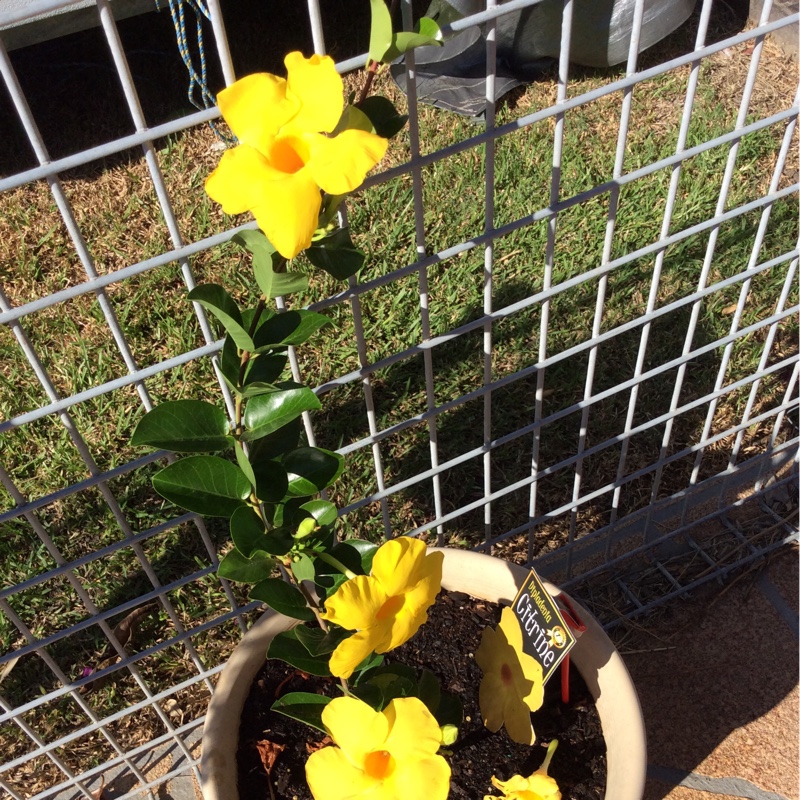
Dipladenia Citrine
Dipladenia Citrine
Dipladenia Citrine is a compact climber with large bright yellow flowers with an orange throat that open throughout the warm months over glossy evergreen foliage. The plant is a semi - climber. If not climbing, it will grown 40-45 cm high
Contributed by @marg
-
Full sun to partial shade
-
Occasional watering
-
Not Frost hardy
-
Free draining and fertile
Common name
Dipladenia Citrine
Latin name
Dipladenia Citrine
type
Evergreens
family
Apocynaceae
ph
5.0 - 8.0 Acid - Neutral
Plant & bloom calendar
-
Best time to plant
-
When the plant will bloom
full grown dimensions
 0.45 M
0.45 M
0.45 M
0.45 M
Dipladenia Citrine
Dipladenia Citrine is a compact climber with large bright yellow flowers with an orange throat that open throughout the warm months over glossy evergreen foliage. The plant is a semi - climber. If not climbing, it will grown 40-45 cm high
Flowering Season
From Late Spring TO Late Autumn
The blooms are accented by deep-green leaves that are an oblong shape. The Dipladenia Citrine blooms in the spring and continues blooming until autumn.
Planting
From Early Spring TO Early Spring
Plant your Mandevilla sanderi vine plant in a location with direct sunlight as well as a little shade. Amend your soil to create the well-drained soil required to avoid root rot of the Mendevilla sanderi. Combine one part loam, two parts sand and two parts peat moss and work it into the soil.













